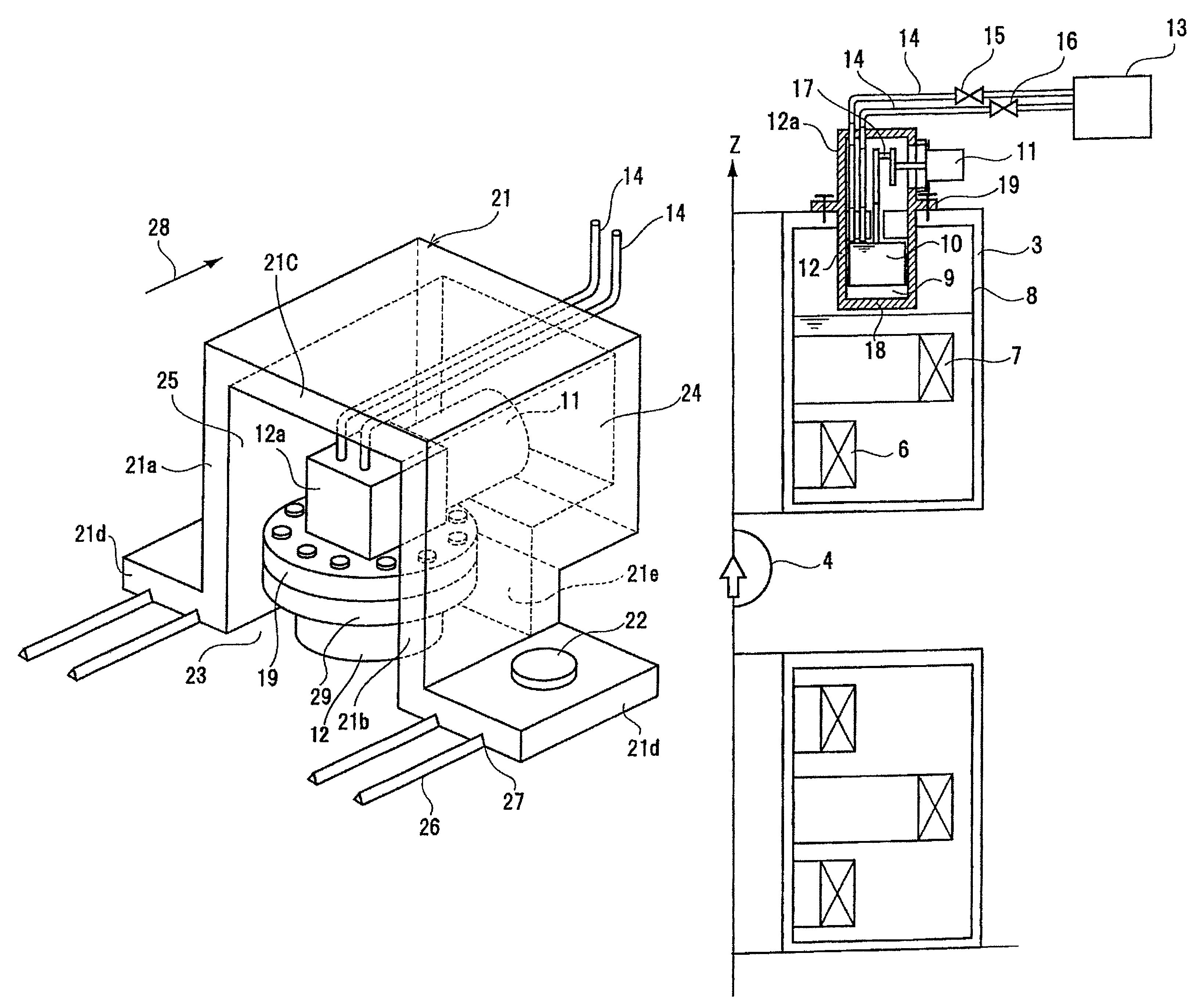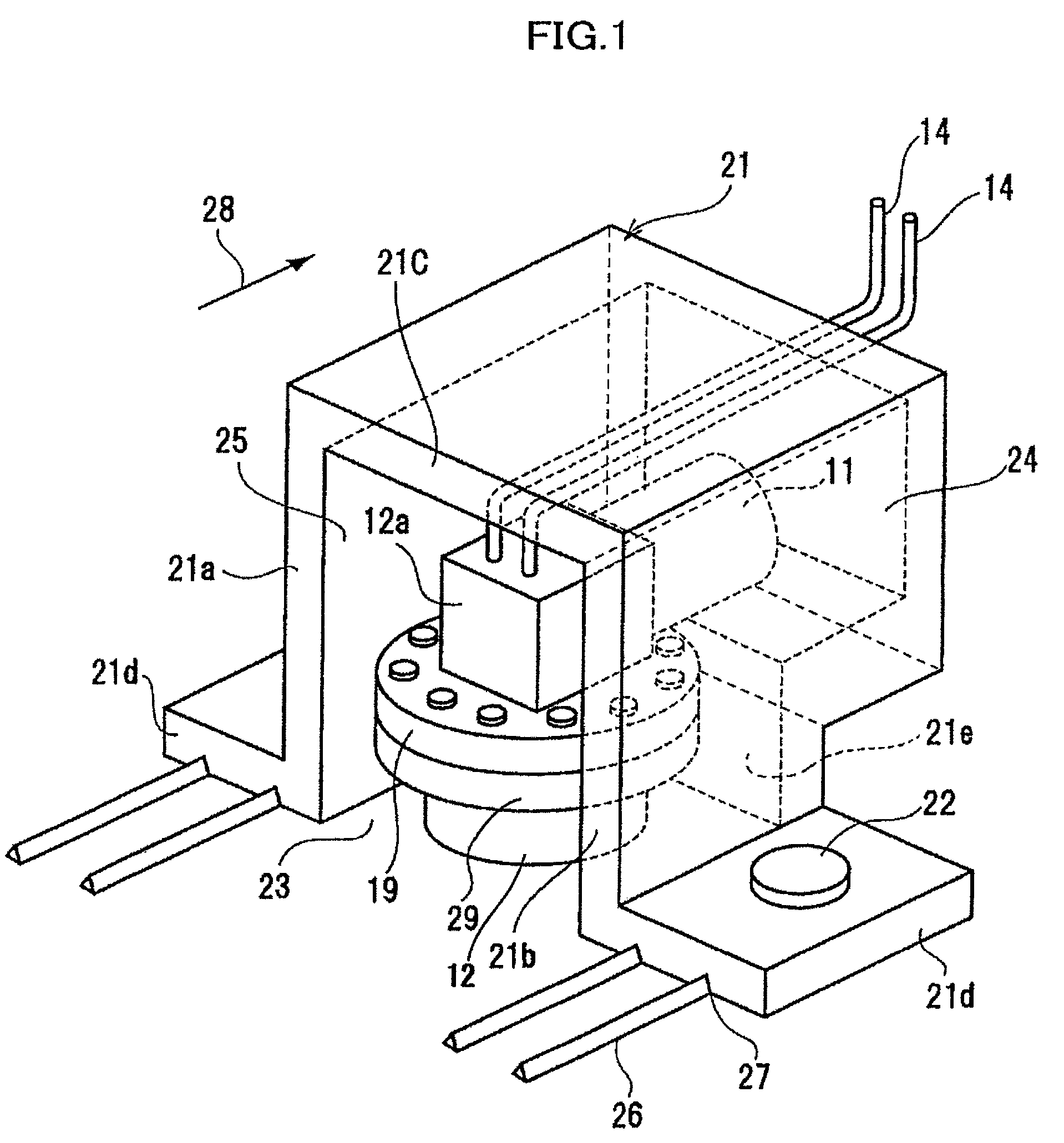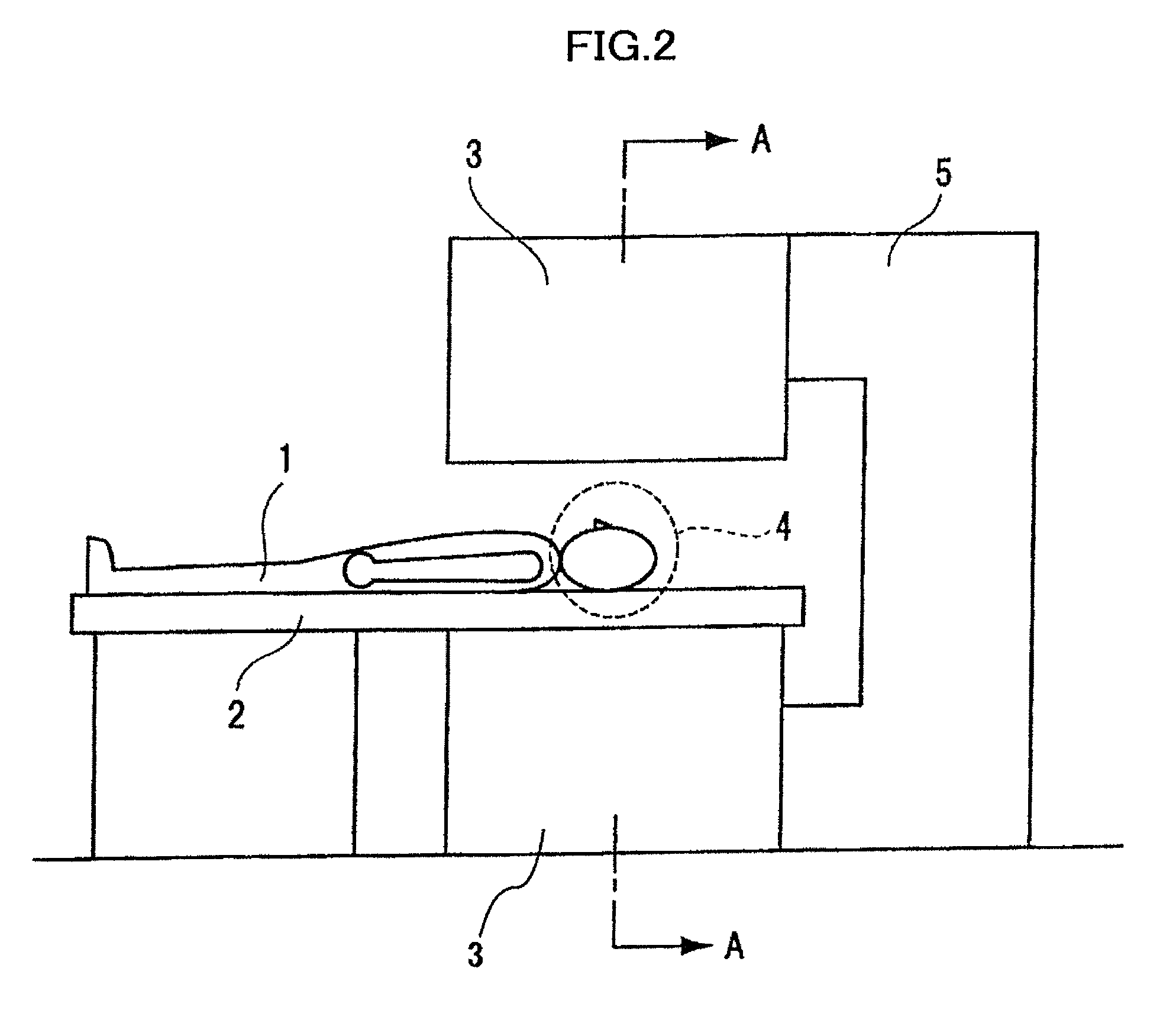Superconducting electromagnet
a superconducting electromagnet and superconducting coil technology, applied in the direction of superconducting magnets/coils, magnetic bodies, dome cooling apparatus, etc., can solve the problems of difficult maintenance of the motor, difficult to avoid heat conduction thereto, and inability to maintain the motor, etc., to achieve small demagnetizing field coefficient, small magnetic resistance, and small leakage magnetic flux density between the motor and the demagnetizing field coefficient is reduced.
- Summary
- Abstract
- Description
- Claims
- Application Information
AI Technical Summary
Benefits of technology
Problems solved by technology
Method used
Image
Examples
first embodiment
[0037]As shown in FIG. 2, a human subject 1 lies on a bed 2, and is traveled to a space sandwiched between a pair of vacuum vessels 3, which are opposing to each other above and below across the bed 2. Subsequently, a predetermined observation area 4 and an area for imaging tomographic planes of the human subject 1 are aligned so that the former includes the latter. A pair of the vacuum vessels 3 are connected by a support pillar 5. FIG. 3 is a cross sectional block diagram showing the main part of a cooling system of the MRI machine when cut along the line A-A in FIG. 2, and the bed 2 is not shown herein. Each vacuum vessel 3 houses a static magnetic field generating source, which generates a static magnetic field whose magnetic field is indicated with a direction of an arrow shown in FIG. 3, in the observation area 4. Each vacuum vessel 3 houses a primary coil 6; a superconducting shield coil 7 which flows therein an electrical current in a direction opposite that flowing in the p...
second embodiment
[0058]FIG. 9 is a perspective view showing a magnetic shield structure according to a second embodiment of the present invention. The second embodiment has the same configuration as that of the first embodiment shown in FIG. 1, except that an opening space 25 of a magnetic shield 21 is shielded by a ferromagnetic material plate 21f, and that the magnetic shield 21 can be divided into two, taking a surface 31 connecting a pair of bolts 22 as a separation plane. Other than that, the same reference numerals are assigned to the same components as those in the first embodiment, and description thereof is omitted herefrom.
[0059]Similarly to the first embodiment shown in FIG. 1, the magnetic shield 21 in this embodiment has an opening space 23 surrounded by ferromagnetic material plates 21a,21b and ferromagnetic material plates 21e,21f, and extending in a reciprocating movement direction of a displacer 10. The opening space 23 is sufficiently longer in the reciprocating movement direction ...
third embodiment
[0062]FIG. 10 is a perspective view showing a magnetic shield structure according to a third embodiment of the present invention. The third embodiment has the same configuration as that of the first embodiment shown in FIG. 1, except that a thickness of a ferromagnetic material plate 21c is smaller than that of each of the ferromagnetic material plates 21a,21b. The ferromagnetic material plate 21c is placed between respective upper ends of the ferromagnetic material plates 21a,21b to cover an upper side of an opening space 23. Other than that, the same reference numerals are assigned to the same components as those in the first embodiment, and description thereof is omitted herefrom.
[0063]Even with the configuration described above, since magnetic field lines at the ferromagnetic material plate 21c direct vertically upward, each of two wider faces of the ferromagnetic material plate 21c is substantially vertical to the magnetic field lines. Thus, as described in “R. M. Bozorth, Ferr...
PUM
| Property | Measurement | Unit |
|---|---|---|
| static magnetic field | aaaaa | aaaaa |
| magnetic field | aaaaa | aaaaa |
| superconducting | aaaaa | aaaaa |
Abstract
Description
Claims
Application Information
 Login to View More
Login to View More - R&D
- Intellectual Property
- Life Sciences
- Materials
- Tech Scout
- Unparalleled Data Quality
- Higher Quality Content
- 60% Fewer Hallucinations
Browse by: Latest US Patents, China's latest patents, Technical Efficacy Thesaurus, Application Domain, Technology Topic, Popular Technical Reports.
© 2025 PatSnap. All rights reserved.Legal|Privacy policy|Modern Slavery Act Transparency Statement|Sitemap|About US| Contact US: help@patsnap.com



